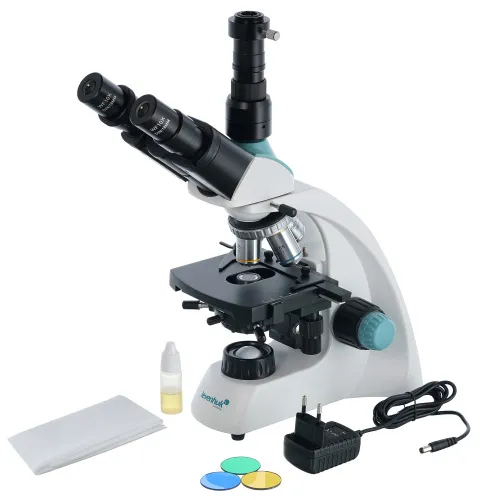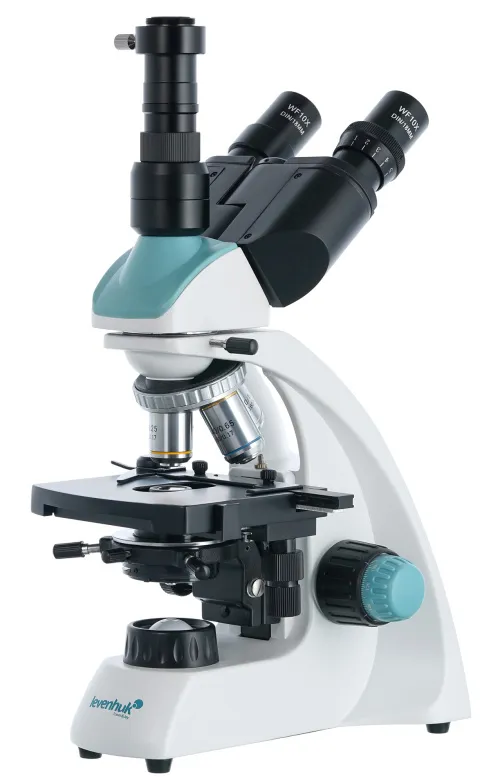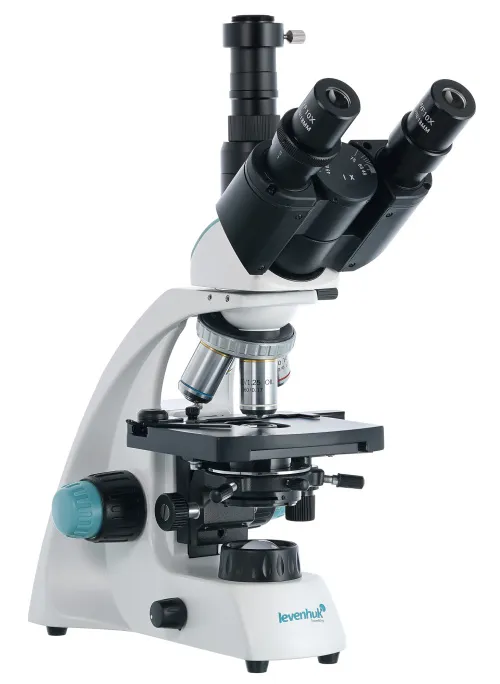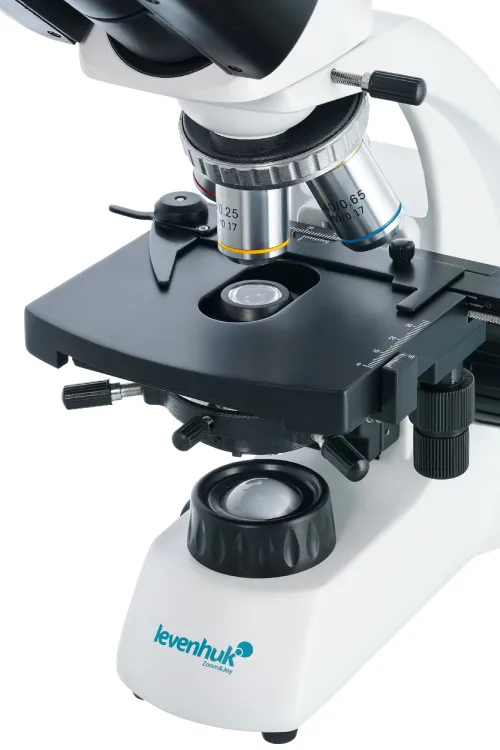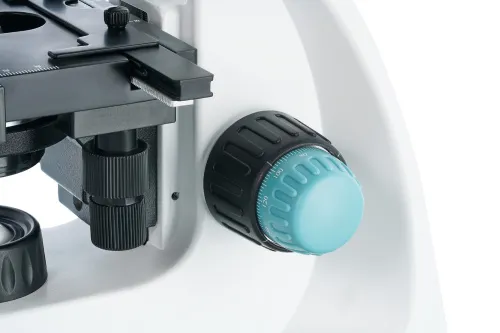Levenhuk 400T Trinocular Microscope
Magnification: 40–1000x. Trinocular head, achromatic objectives, LED light with a collector
| Product ID | 75421 |
| Brand | Levenhuk, Inc., USA |
| Warranty | lifetime |
| EAN | 5905555005263 |
| Package size (LxWxH) | 42x21x29 cm |
| Shipping Weight | 4.06 kg |
The Levenhuk 400T is a classic trinocular microscope with a binocular visual part and a vertical tube for installing a digital camera in it. This microscope is an excellent choice for a laboratory. It will help a medical worker, microbiologist, biochemist, or any other specialist who studies biological samples. The microscope uses the achromatic optics and comes with an LED light. A bright field method and oil immersion can be used for research.
A microscope head is rotatable, which is practical for group work. A visual part is inclined at 30°: that makes lengthy work with a microscope more comfortable. The 10x eyepieces provide a wide field of view, while achromatic optics deliver details of small structures clearly and sharply. The objectives with 4x, 10x, 40x, and 100x magnification are installed in a revolving nosepiece. Overall microscope magnification varies from 40x to 1000x. Please note that this microscope allows for applying oil immersion research method using a 100x objective. What is more, 40x and 100x objectives feature protective spring-loaded frames.
The stage is equipped with a mechanical scale. Next to the stage, there are fine and coarse focusing knobs. Right underneath, there is a bright field Abbe condenser with an iris diaphragm and a filter holder. The lighting system consisting of an LED light and collector is located even lower. The lighting features brightness adjustment and is powered by batteries or an AC power supply. The microscope body is made of metal.
Features:
- Trinocular rotatable head with a tube for installing a digital camera
- The wide-field achromatic optics with 40–1000x magnification
- Lower LED lighting with a collector and brightness adjustment
- Power supply is variable: by batteries or AC power supply
- Metal body, practical coarse and fine focusing
The kit includes:
- Microscope
- 4x, 10x, 40xs, 100xs (oil) achromatic objectives
- WF10x/18mm eyepieces (2 pcs)
- Abbe condenser N.A. 1.25 with an iris diaphragm and a filter holder
- Charging power cord
- C-mount
- Bottle of immersion oil
- Filters: blue, green, yellow
- Dust cover
- User manual and lifetime warranty
| Product ID | 75421 |
| Brand | Levenhuk, Inc., USA |
| Warranty | lifetime |
| EAN | 5905555005263 |
| Package size (LxWxH) | 42x21x29 cm |
| Shipping Weight | 4.06 kg |
| Type | biological, light/optical |
| Microscope head type | trinocular |
| Optics material | optical glass |
| Head | 360 ° rotatable |
| Head inclination angle | 30 ° |
| Magnification, x | 40 — 1000 |
| Eyepiece tube diameter, mm | 23.2 |
| Eyepieces | WF10x/18mm (2 pcs.) |
| Objectives | achromatic: 4x, 10x, 40xs, 100xs (oil immersion) |
| Revolving nosepiece | for 4 objectives |
| Interpupillary distance, mm | 48 — 75 |
| Stage, mm | 115x110 |
| Stage moving range, mm | 55/20 |
| Stage features | mechanical double-layer |
| Eyepiece diopter adjustment, diopters | ±5 |
| Condenser | Abbe N.A. 1.25 with an iris diaphragm and filter holder |
| Diaphragm | iris |
| Focus | coaxial, coarse (12mm) and fine (0.002mm) |
| Body | metal |
| Illumination | LED |
| Brightness adjustment | ✓ |
| Power supply | 110–220V, via AC adapter (included), 3 AA batteries (not included) |
| Power supply: batteries/built-in battery | yes |
| Light source type | with a collector, 1W LED |
| Light filters | blue, green, yellow |
| User level | experienced users |
| Assembly and installation difficulty level | easy |
| Application | laboratory/medical |
| Illumination location | lower |
| Research method | bright field |
| Pouch/case/bag in set | dust cover |
We have gathered answers to the most frequently asked questions to help you sort things out
Find out why studying eyes under a microscope is entertaining; how insects’ and arachnids’ eyes differ and what the best way is to observe such an interesting specimen
Read this review to learn how to observe human hair, what different hair looks like under a microscope and what magnification is required for observations
Learn what a numerical aperture is and how to choose a suitable objective lens for your microscope here
Learn what a spider looks like under microscope, when the best time is to take photos of it, how to study it properly at magnification and more interesting facts about observing insects and arachnids
This review for beginner explorers of the micro world introduces you to the optical, illuminating and mechanical parts of a microscope and their functions
Short article about Paramecium caudatum - a microorganism that is interesting to observe through any microscope


